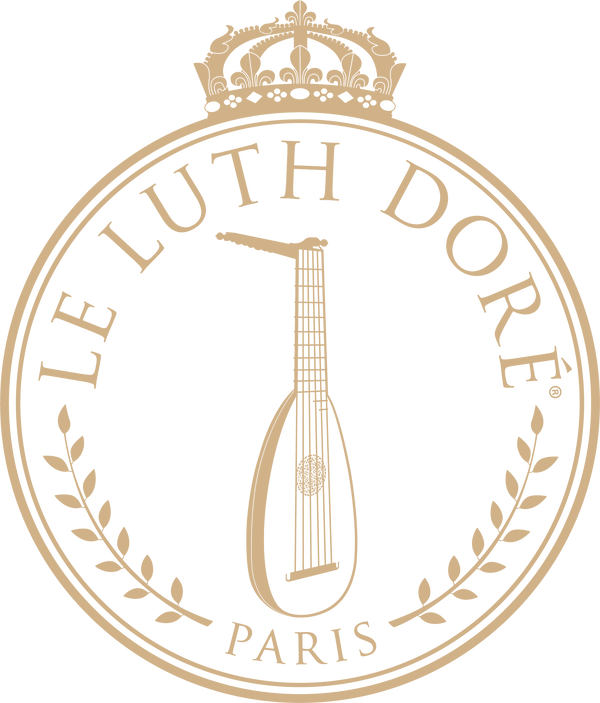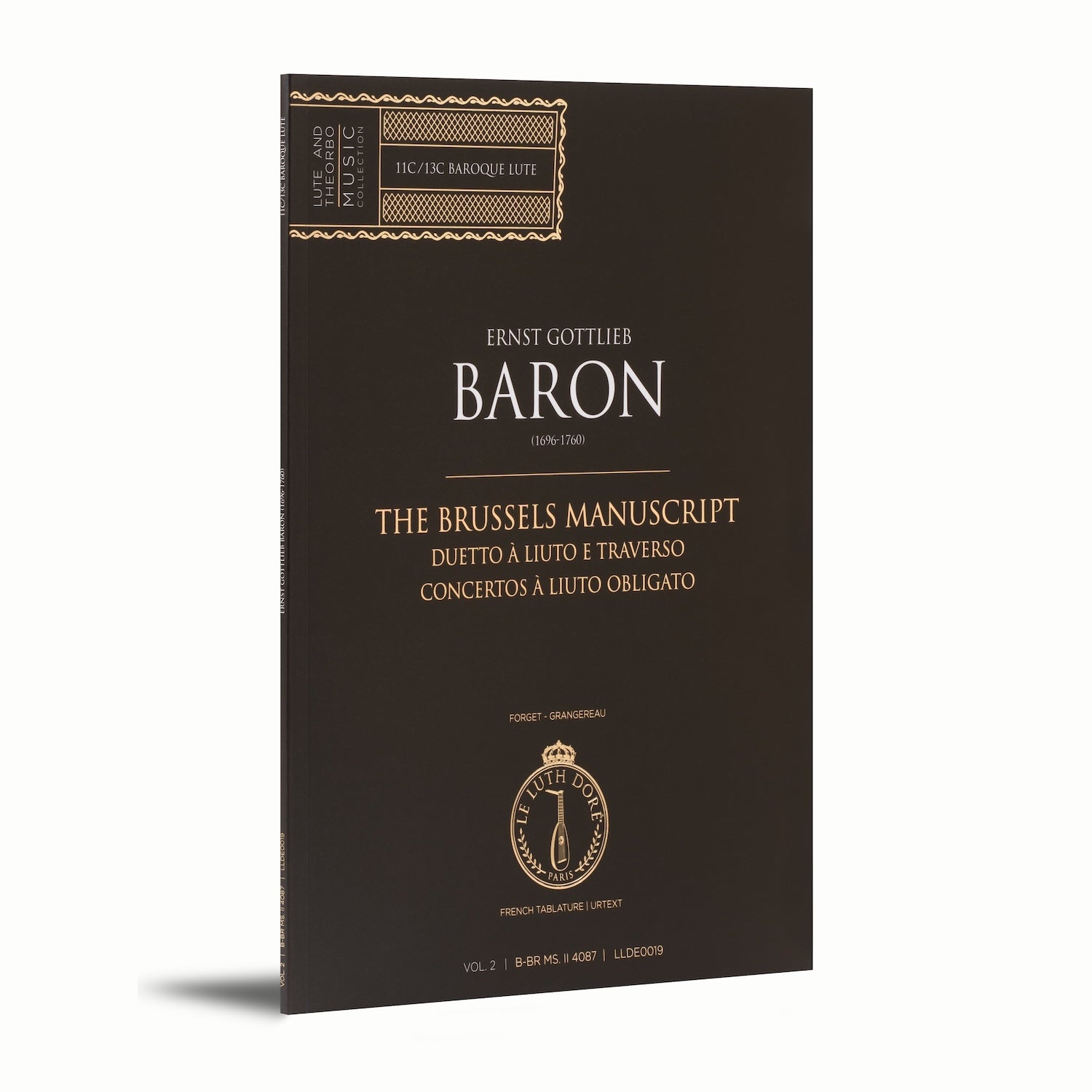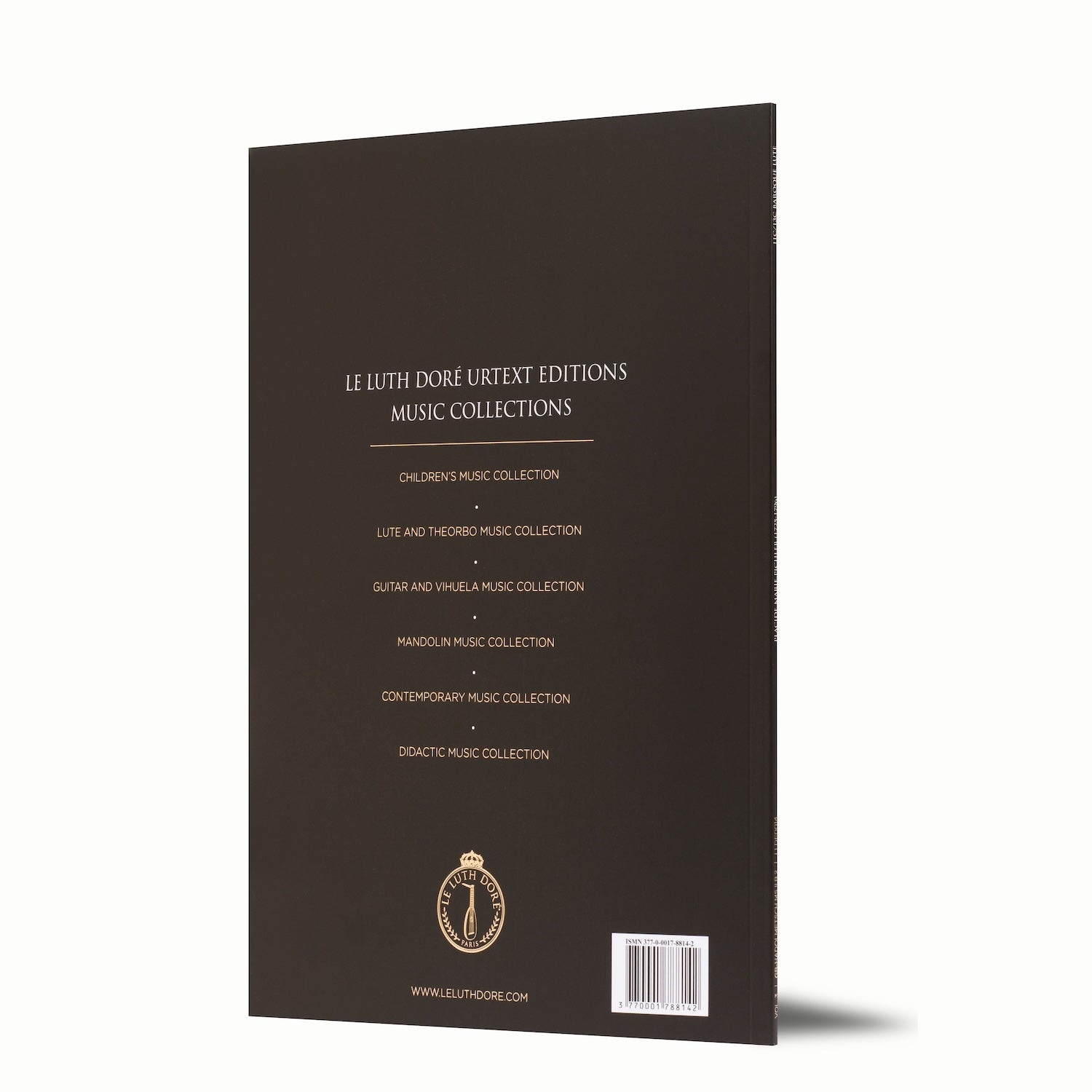My Store
The Brussels Manuscript, Concertos à liuto obligato & Duetto à liuto e traverso
The Brussels Manuscript, Concertos à liuto obligato & Duetto à liuto e traverso
SKU:LLDE0019
• Composer(s): Ernst Gottlieb Baron (1696-1760)
• Title: The Brussels Manuscript
• Subtitle: Duetto à liuto e traverso & Concertos à liuto obligato
• Year of publication: c.1760
• Source: B-Br Ms. II 4087
• Volume: II
• Scholarly edition based on original sources
• Accurate transcriptions, historical fingering, optimal readability
• Ideal for concerts, research, or higher education
No VAT applied (Article 293 B of the French Tax Code).
3 payments at 0% interest with Klarna
Couldn't load pickup availability
Share
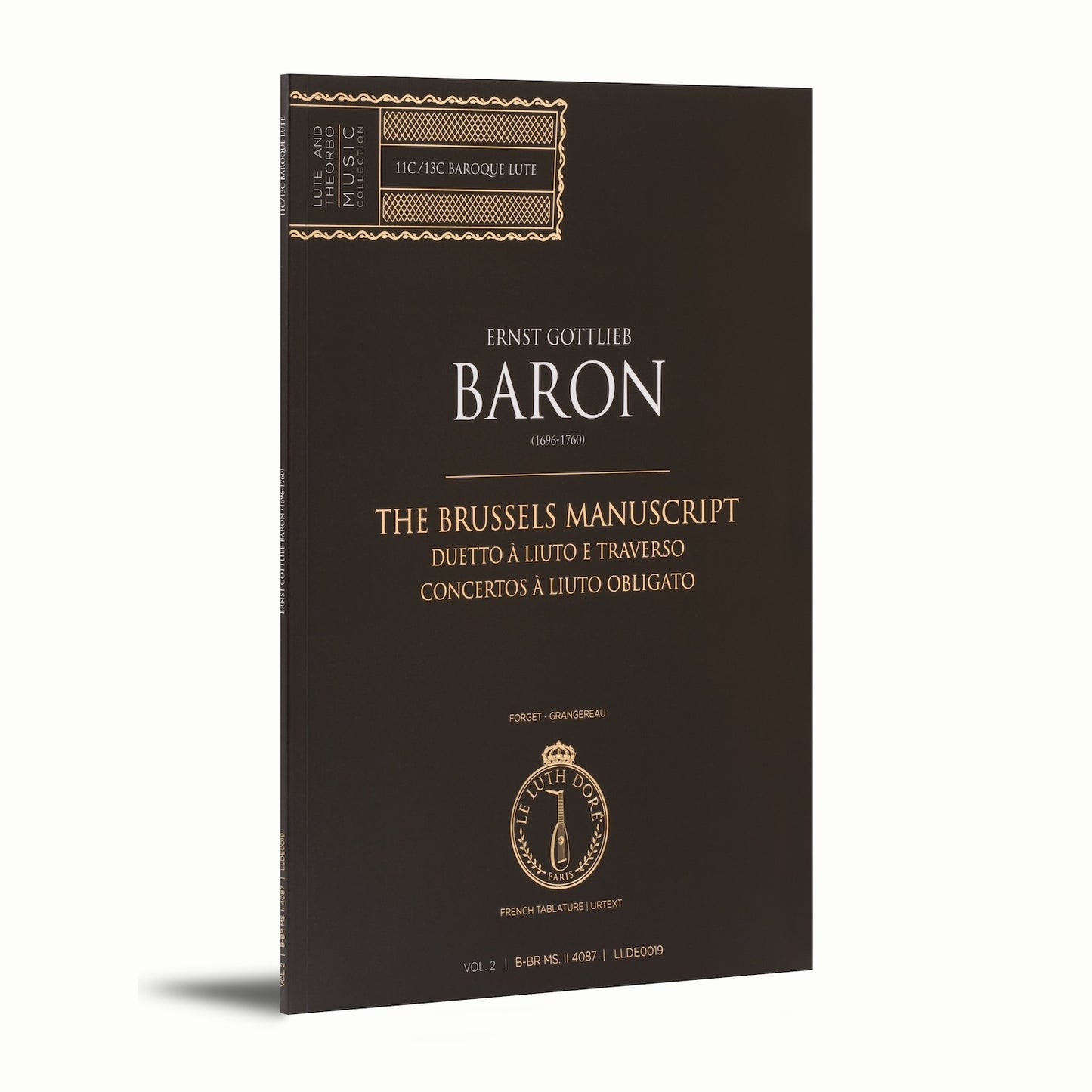
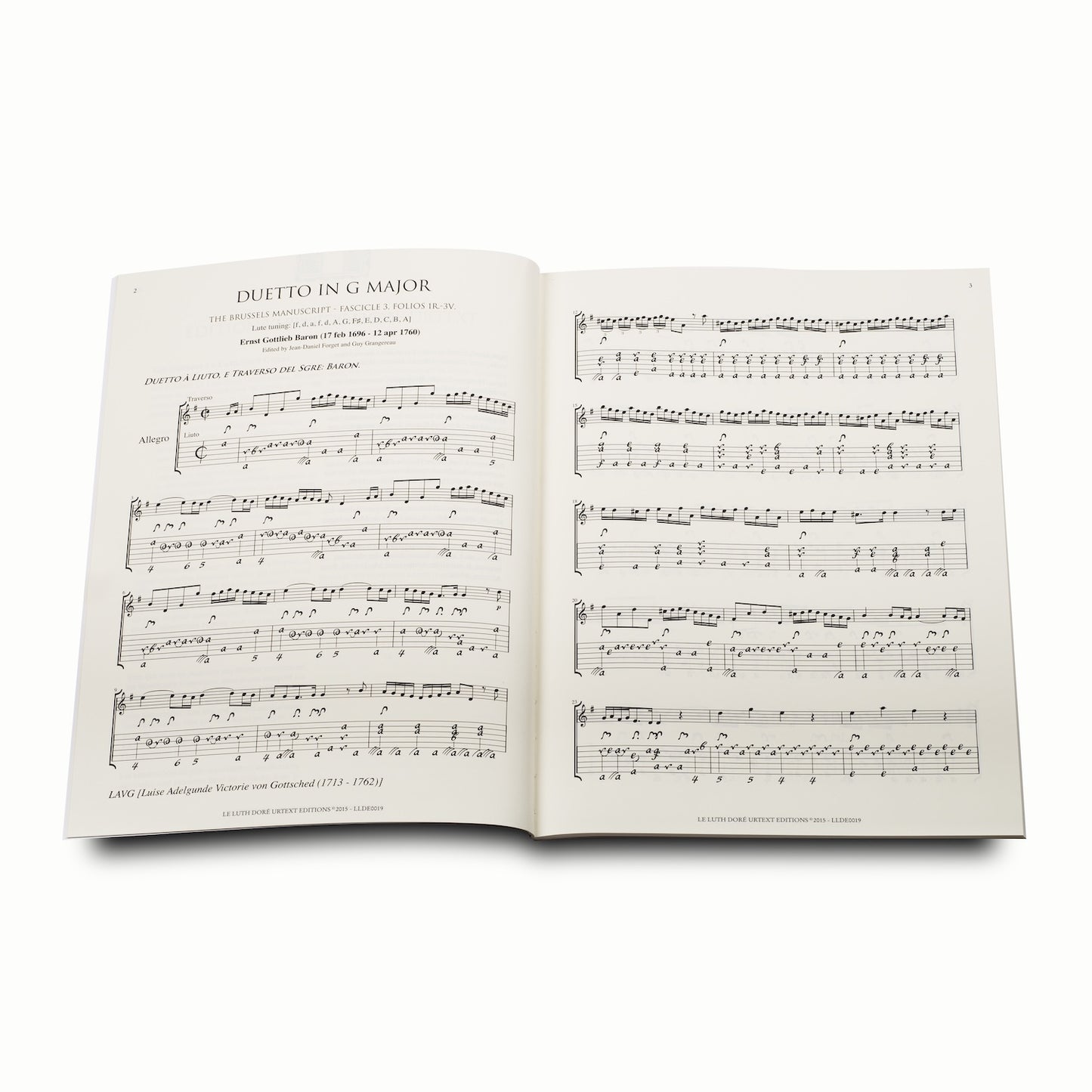
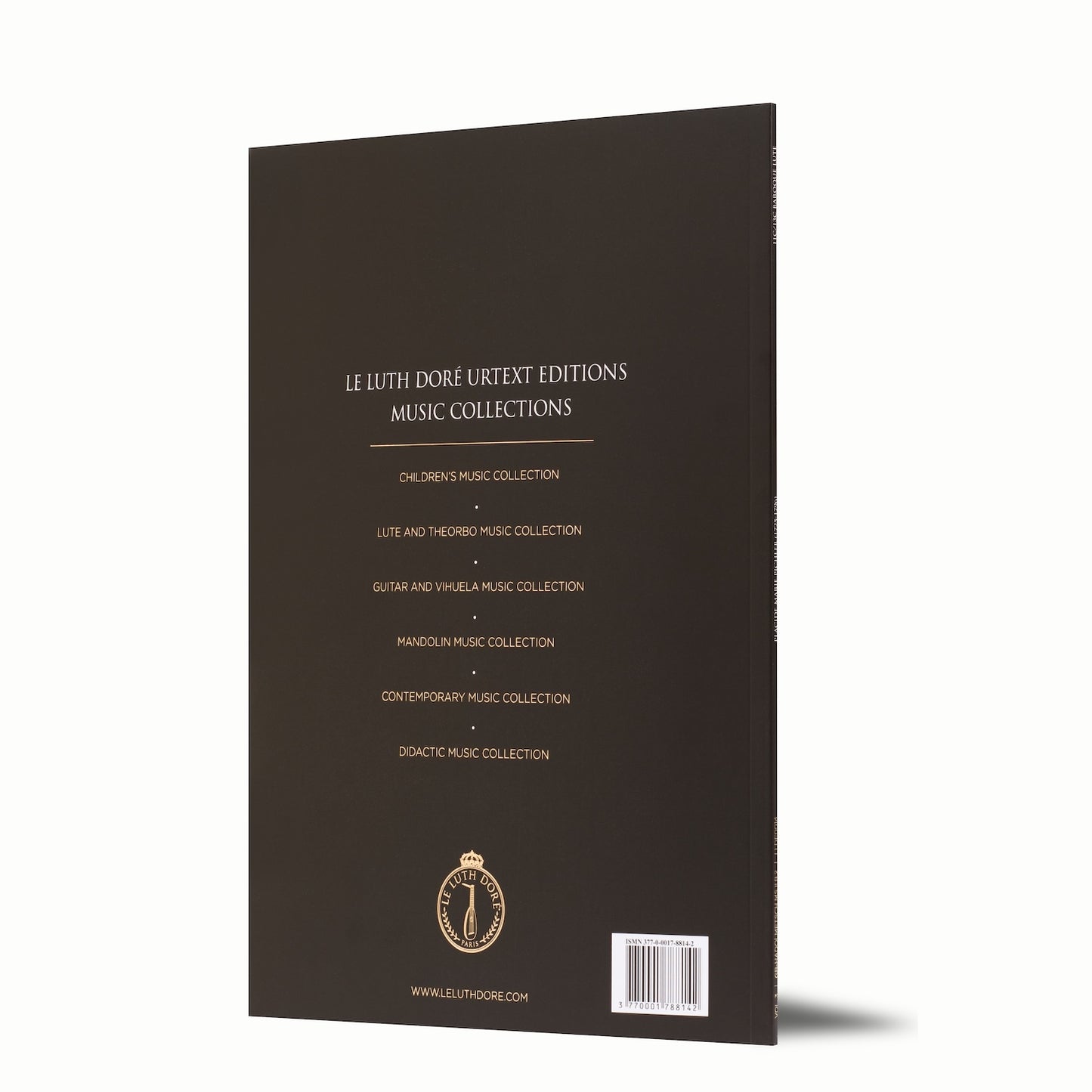
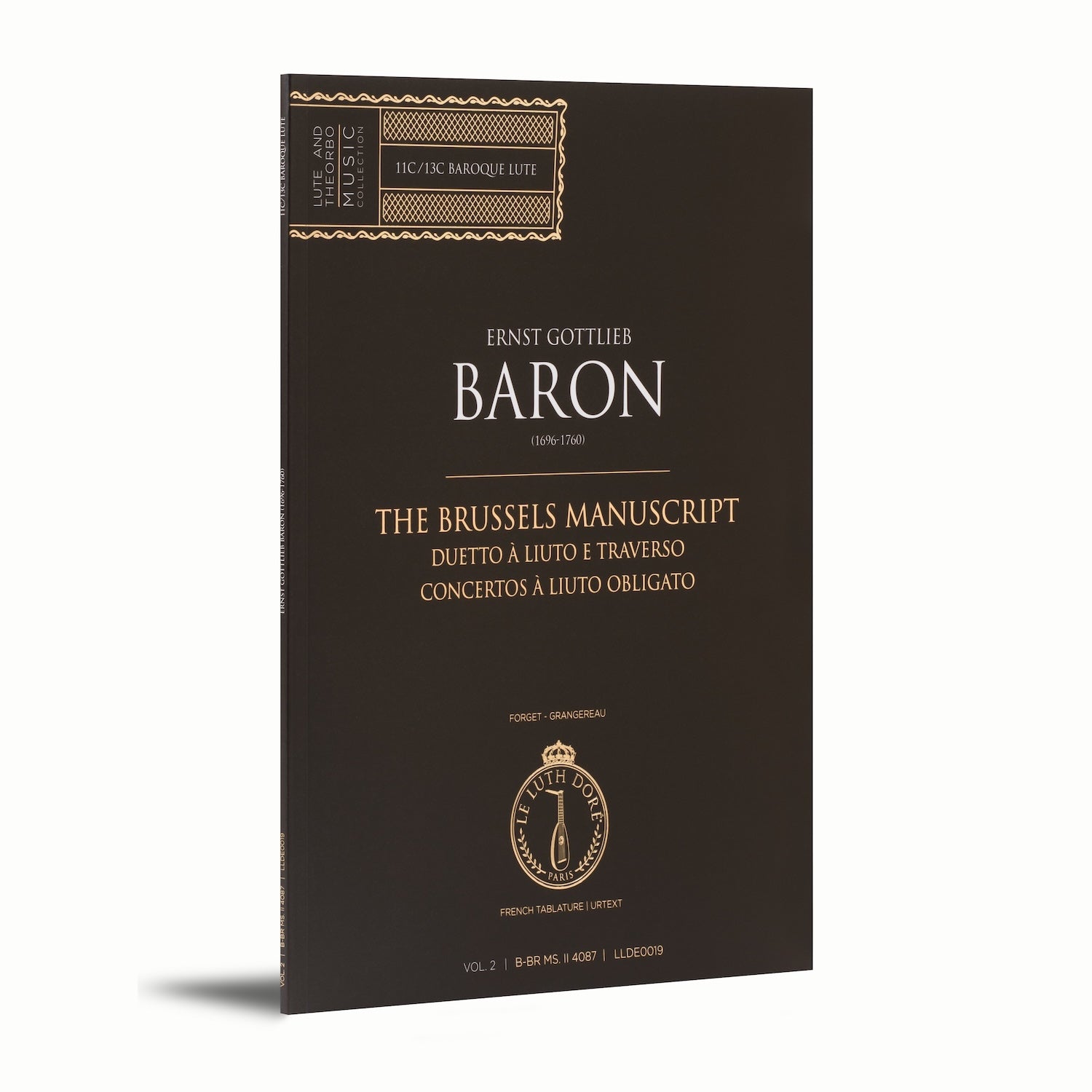
The Enlightenment Lute: Baron in Brussels
Preserved in the Royal Library of Belgium, The Brussels Manuscript contains lute works by Ernst Gottlieb Baron, a major lutenist and theorist of the eighteenth century. It features ten solo lute sonatas, a duet with transverse flute, and two concertos for violin, lute, and basso continuo, all written in a refined galant style.
This modern edition, prepared by Jean-Daniel Forget and Guy Grangereau, faithfully reproduces the original French tablature. It sheds light on a little-known corpus that combines virtuosity, elegance, and contrapuntal clarity.
Product Details
Overview
The Brussels Manuscript by Ernst Gottlieb Baron
The Brussels Manuscript, preserved in the Royal Library of Belgium (KBR), contains works by Ernst Gottlieb Baron, an eighteenth-century lutenist and theorist. Commissioned by the publisher Breitkopf around 1760 and later acquired by François-Joseph Fétis, the manuscript includes ten solo lute sonatas, a duet for flute and lute, and two concertos for violin, lute, and basso continuo. Some pieces initially attributed to Weiss are now recognized as works by Baron.
Ernst Gottlieb Baron (1696–1760)
Born in 1696 in Breslau, Baron began studying the lute at an early age and later pursued law and philosophy in Leipzig, where he further developed his musical skills. In 1727, he published a historical and theoretical treatise on the lute, which remains a major reference on the instrument and its performers.
After serving in various German courts, he joined the Berlin court in 1737 under Frederick William I and remained there under Frederick the Great. As a musician, teacher, and scholar, Baron left behind a body of work marked by the refined galant style of the eighteenth century. He died in Berlin in 1760.
Editors
Jean-Daniel Forget – IT Specialist, Lutenist
Passionate about the Baroque repertoire, Jean-Daniel Forget is a self-taught lutenist who has been copying and disseminating early music manuscripts for nearly twenty years. A professional IT specialist, he is proficient in music notation software tailored for tablature. In collaboration with Guy Grangereau, he makes tablatures available through a dedicated website. He also assisted Miguel Serdoura in the preparation of his editions and his Baroque Lute Method.
Guy Grangereau – Guitarist, Lutenist
A professional musician, Guy Grangereau studied guitar in Paris with Turibio Santos before continuing his training at the Martenot School. He taught for twenty years and now performs on a 16-string hybrid instrument and a theorboed baroque lute. Since 2010, he has collaborated with Jean-Daniel Forget in copying and revising Baroque manuscripts, particularly focusing on the works of Silvius Leopold Weiss.
Urtext Editions
Le Luth Doré Urtext Editions
Le Luth Doré Urtext Editions offer scores faithful to historical sources, optimized for musicians and musicologists. Our editions combine careful engraving, practical layout, durable materials, and a detailed critical apparatus in multiple languages.
Each text is rigorously established note by note to ensure an authentic restitution of the works, including original fingerings and ornamentations, as well as relevant stylistic suggestions.
Prepared by experts, our editions provide clear readability and informed interpretation of the early music repertoire.
We dedicate Le Luth Doré Urtext Editions to the memory of William H. Roberts († 2024), cofounder and source of inspiration for this collection. Without his vision and unwavering support, these editions would never have come into being.
Technical Details
• Editor(s): Jean-Daniel Forget & Guy Grangereau
• Musical period: Baroque
• Instrument(s): 11c/13c Baroque lute
• Instrumentation: Solo Baroque lute
• Notation: French tablature
• Modern edition: Urtext
• Publisher: Le Luth Doré Urtext Editions
• Year of publication: 2015
• Series: Lute and Theorbo Music Collection
• Pages: 80 pp.
• Dimensions: 230 × 310 mm
• Weight: 0.320 kg
• Binding: Sewn perfect binding
• Cover: Soft cover with flaps, anti-scratch lamination, gold stamping, and spot varnish
• ISMN: 377-0-0017-8819-7
Table of Contents
• Duetto à Liuto e Traverso, en Sol Majeur : Allegro, Adagio, Presto
• Concerto à Liuto obligato, Violino e Basso, en Do Majeur : Allegro, Adagio, Vivace
• Concerto Secondo à Liuto obligato, Violino e Basso, en La mineur : Allegro, Largo, Presto
Press Reviews
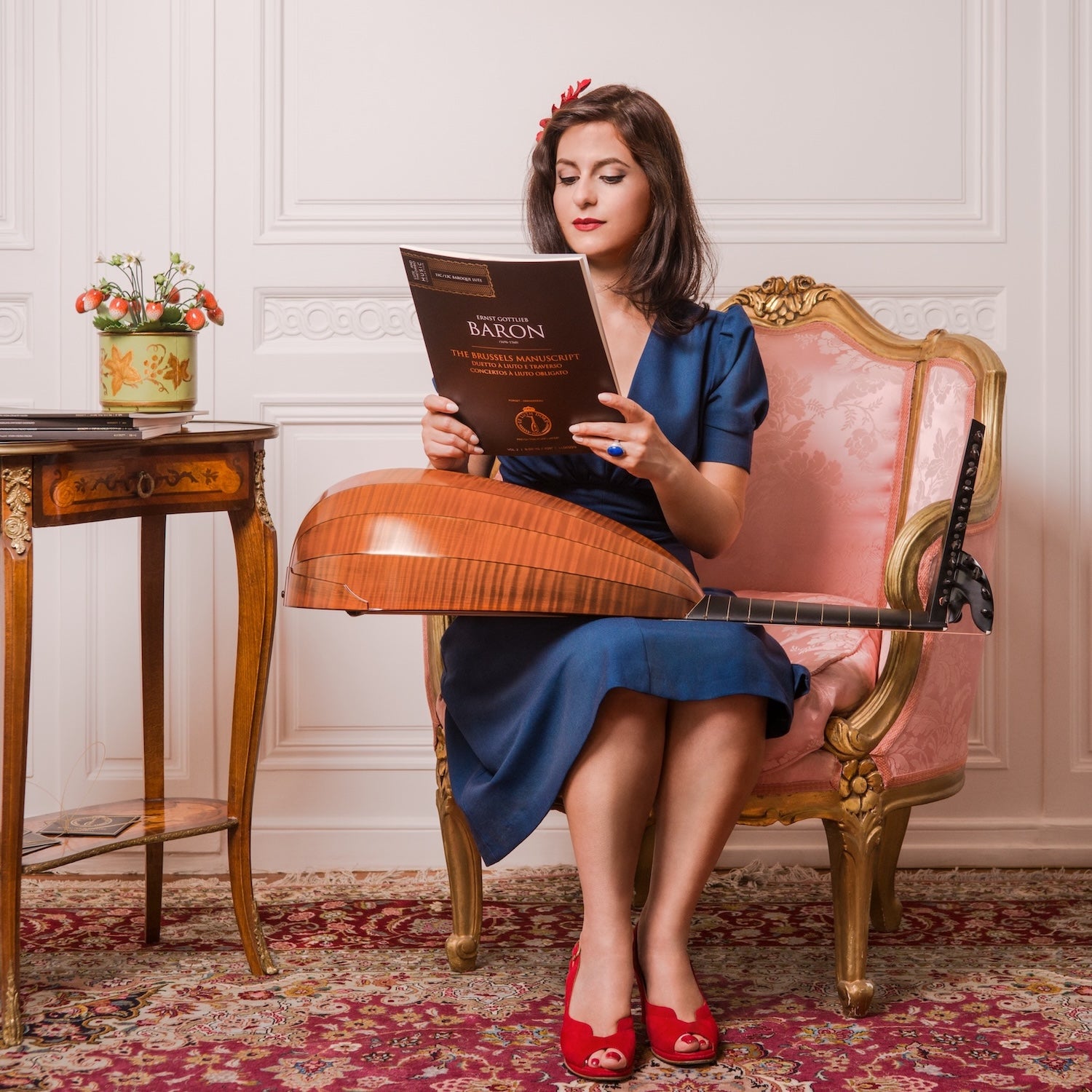
Editions for Baroque Lute
Each volume is crafted as a work of editorial art: high-quality printing, notation faithful to original sources, dual tablature (French and Italian), and rigorous critical apparatus.
Designed for today’s lutenists, these urtext editions embody the precision and elegance inherent to the art of the lute.
